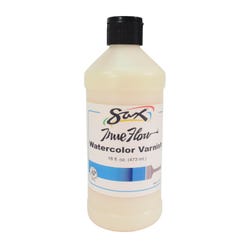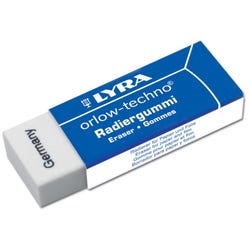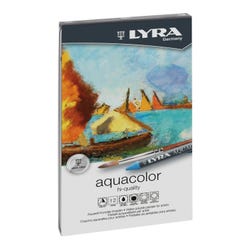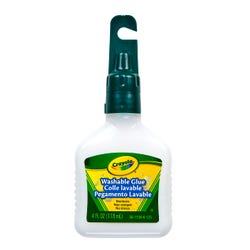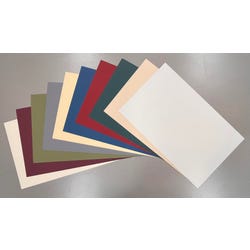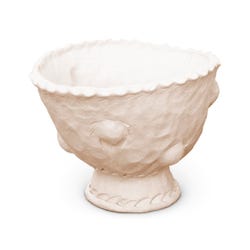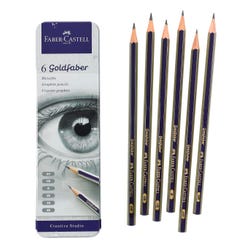Faux Fresco Paintings
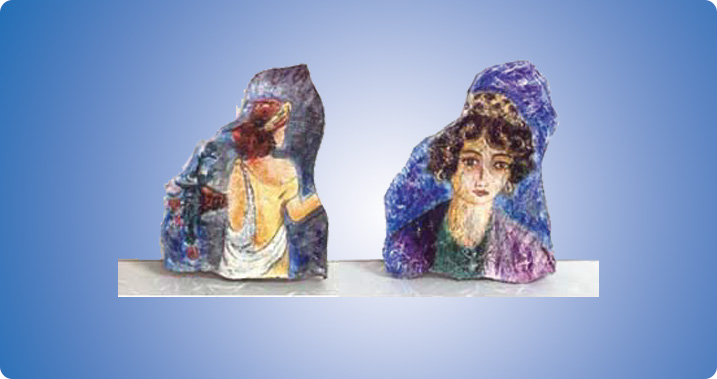
Description
New watercolor pencils allow students to easily make the sometime difficult transition between drawing and painting. This blended drawing and painting project will be fun and bring enjoyment to students of all ages. Many subjects can be used, but natural forms such as flowers and plants lend themselves to exciting and colorful projects. Have students study natural forms that have repetitive shapes and patterns such as flowers. Develop design elements on watercolor paper using drawing techniques with the watercolor pencils. A variety of line thickness and colors for the design shapes of the flowers and leaves add to the visual expression.
Objectives
- Students will develop a design motif from nature.
- Students will apply various drawing and painting techniques to their project.
- Students will achieve a blending between the various drawing and painting techniques in their project.
- Students will exhibit craftsmanship in their finished project.
Supplies Needed
Reeves Watercolor Pencils, 12-Color Set
Reeves Watercolor Pencils, 24-Color Set
Strathmore® Series 300 Watercolor Paper, 140-Lb., 12-Sheet Pads
Sax® True Flow® Optimum Golden Taklon Brush, #8 Round
Optional Materials:
Jacquard Pearl Acrylic Enamels, 6-Color Set, 0.75-Oz. Jars
Instructions
1
Research Fresco work, specifically that of Pompeii, Herculaneum and Stabiano before the eruption of Mt. Vesuvius in A.D. 79.
2
Discuss this information and offer prints or videos of Fresco Painting to give students an idea of what the artwork and life was like in ancient cities.
3
Discuss how a Fresco was made. Basically a Fresco is a painting done on fresh limestone plaster with pigments dissolved in limestone water. As both dry, they completely integrate, causing these works to last for centuries.
4
For this lesson, students will do a combination of drawing, dry brush and wash techniques with the Staedlter® Watercolor Crayons on an air-dried slab of Stonex Clay. The pigments will sink into the clay to simulate the ancient Fresco process.
5
Roll out a slab of Stonex Clay approximately 1-3/4" thick and about 9" x 12" in total size.
6
Using white sulphite drawing paper, have the students draw a rough-edged shape that will represent a piece of a Fresco that is no bigger than approximately 5" x 6". Use this shaped template to cut out a piece of clay for the Fresco Painting. Texture the surface of the wet clay slightly with Rubbing Plates or crumpled up aluminum foil to simulate a wall's texture.
7
Allow the Stonex shapes to dry for a day or two until they are completely dry.
8
Students will study Fresco work of the ancient Romans of Pompeii, Herculaneum and Stabiano for subject matter to create a small sketch for their own work.
9
Sketches will be done in pencil directly on the clay slab.
10
The Staedlter® Watercolors will be used to draw color directly on the clay slabs. They will be used for line, wash and dry brush techniques.
11
To soften areas of color and have colors sink into the clay as in a Fresco process, students will begin to do washes using the miniature detail brushes.
12
Inform the students of the fact that too much water will cause a muddy effect because the clay will start to go into a wet slip state.
13
Areas of the design can be emphasized by adding more color and by using the miniature detail brushes.
14
Only after all areas of the drawn and painted slab are dry, lightly brush on the Sax® Watercolor. Varnish to keep the Fresco from smudging.
15
Mount the work on Crescent® Mat Board with glue to give the piece stability.
16
Proudly display your Faux Fresco Paintings.




